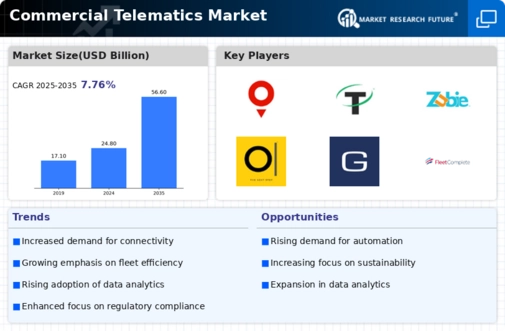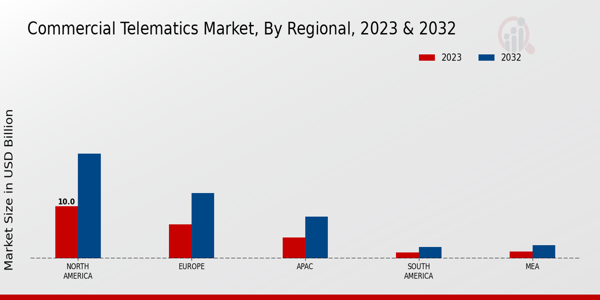-
EXECUTIVE SUMMARY
-
1.1.
-
Market Overview
-
Key Findings
-
Market Segmentation
-
1.4.
-
Competitive Landscape
-
Challenges and Opportunities
-
Future
-
Outlook
-
MARKET INTRODUCTION
-
Definition
-
Scope of the study
- Research Objective
- Assumption
- Limitations
-
RESEARCH METHODOLOGY
-
Overview
-
3.2.
-
Data Mining
-
Secondary Research
-
Primary Research
- Breakdown of Primary
-
3.4.1.
-
Primary Interviews and Information Gathering Process
-
Respondents
-
Forecasting Model
-
Market Size Estimation
- Top-Down Approach
-
3.6.1.
-
Bottom-Up Approach
-
Data Triangulation
-
Validation
-
MARKET DYNAMICS
-
Overview
-
Drivers
-
Restraints
-
Opportunities
-
MARKET
-
FACTOR ANALYSIS
-
Value chain Analysis
-
Porter''s Five Forces
- Bargaining Power of Suppliers
- Bargaining Power
- Threat of New Entrants
- Threat of Substitutes
- Intensity of Rivalry
-
Analysis
-
of Buyers
-
COVID-19 Impact Analysis
- Regional Impact
- Opportunity and
-
5.3.1.
-
Market Impact Analysis
-
Threat Analysis
-
COMMERCIAL TELEMATICS MARKET, BY SOLUTION
-
TYPE (USD BILLION)
-
Fleet Management
-
Insurance Telematics
-
Vehicle Tracking
-
Driver Behavior Monitoring
-
COMMERCIAL
-
TELEMATICS MARKET, BY TELEMATICS TYPE (USD BILLION)
-
Hardware
-
7.2.
-
Software
-
Services
-
COMMERCIAL TELEMATICS MARKET, BY NETWORK TYPE
-
(USD BILLION)
-
Dedicated Short Range Communication
-
Cellular
-
Satellite
-
COMMERCIAL TELEMATICS MARKET, BY END USE SECTOR (USD
-
BILLION)
-
Transportation and Logistics
-
Construction
-
9.3.
-
Public Sector
-
Retail
-
COMMERCIAL TELEMATICS MARKET, BY REGIONAL
-
(USD BILLION)
-
North America
- US
- Canada
-
Europe
- Germany
- UK
- France
- Italy
- Spain
- Rest of Europe
-
10.2.4.
-
Russia
-
APAC
- China
- India
- Japan
- Malaysia
- Thailand
- Indonesia
- Rest of APAC
-
10.3.4.
-
South Korea
-
South America
- Brazil
- Argentina
- Rest of South America
-
10.4.2.
-
Mexico
-
MEA
- GCC Countries
- South Africa
- Rest of MEA
-
COMPETITIVE LANDSCAPE
-
Overview
-
11.2.
-
Competitive Analysis
-
Market share Analysis
-
Major Growth
-
Strategy in the Commercial Telematics Market
-
Competitive Benchmarking
-
Leading Players in Terms of Number of Developments in the Commercial
-
Telematics Market
-
Key developments and growth strategies
- Merger & Acquisitions
- Joint Ventures
-
11.7.1.
-
New Product Launch/Service Deployment
-
Major Players Financial Matrix
- Major Players R&D Expenditure. 2023
-
11.8.1.
-
Sales and Operating Income
-
COMPANY PROFILES
-
TomTom
- Financial Overview
- Products Offered
- Key Developments
- SWOT Analysis
- Key Strategies
-
Teletrac
- Financial Overview
- Products Offered
- Key Developments
- SWOT
- Key Strategies
-
Analysis
-
Zubie
- Financial
- Products Offered
- Key Developments
- Key Strategies
-
Overview
-
12.3.4.
-
SWOT Analysis
-
Nauto
- Financial
- Products Offered
- Key Developments
- Key Strategies
-
Overview
-
12.4.4.
-
SWOT Analysis
-
Continental
- Products Offered
- Key Developments
- SWOT Analysis
- Key Strategies
-
12.5.1.
-
Financial Overview
-
Geotab
- Financial Overview
- Products Offered
- Key Developments
- SWOT Analysis
- Key Strategies
-
Fleet Complete
- Financial Overview
- Products Offered
- Key
- SWOT Analysis
- Key Strategies
- Financial Overview
- Products Offered
- Key Developments
- SWOT Analysis
- Key Strategies
-
Developments
-
12.8.
-
Mix Telematics
-
Fleetmatics
- Financial Overview
- Products
- Key Developments
- SWOT Analysis
-
Offered
-
12.9.5.
-
Key Strategies
-
Omnicommerce
- Financial Overview
- Key Developments
- SWOT Analysis
- Key Strategies
-
12.10.2.
-
Products Offered
-
Trimble
- Financial Overview
- Products Offered
- Key Developments
- SWOT
- Key Strategies
-
Analysis
-
Verizon
- Financial
- Products Offered
- Key Developments
- Key Strategies
-
Overview
-
12.12.4.
-
SWOT Analysis
-
Samsara
- Products Offered
- Key Developments
- SWOT Analysis
- Key Strategies
-
12.13.1.
-
Financial Overview
-
Teletrac
- Financial Overview
- Products Offered
- SWOT Analysis
- Key Strategies
-
Navman
-
12.14.3.
-
Key Developments
-
Motive
- Financial Overview
- Products Offered
- Key Developments
- SWOT Analysis
- Key
-
Strategies
-
APPENDIX
-
References
-
Related Reports
-
LIST OF TABLES
-
LIST OF ASSUMPTIONS
-
NORTH
-
AMERICA COMMERCIAL TELEMATICS MARKET SIZE ESTIMATES & FORECAST, BY SOLUTION
-
TYPE, 2019-2032 (USD BILLIONS)
-
NORTH AMERICA COMMERCIAL TELEMATICS
-
MARKET SIZE ESTIMATES & FORECAST, BY TELEMATICS TYPE, 2019-2032 (USD BILLIONS)
-
NORTH AMERICA COMMERCIAL TELEMATICS MARKET SIZE ESTIMATES & FORECAST,
-
BY NETWORK TYPE, 2019-2032 (USD BILLIONS)
-
NORTH AMERICA COMMERCIAL
-
TELEMATICS MARKET SIZE ESTIMATES & FORECAST, BY END USE SECTOR, 2019-2032 (USD
-
BILLIONS)
-
NORTH AMERICA COMMERCIAL TELEMATICS MARKET SIZE ESTIMATES
-
& FORECAST, BY REGIONAL, 2019-2032 (USD BILLIONS)
-
US COMMERCIAL
-
TELEMATICS MARKET SIZE ESTIMATES & FORECAST, BY SOLUTION TYPE, 2019-2032 (USD
-
BILLIONS)
-
US COMMERCIAL TELEMATICS MARKET SIZE ESTIMATES & FORECAST,
-
BY TELEMATICS TYPE, 2019-2032 (USD BILLIONS)
-
US COMMERCIAL TELEMATICS
-
MARKET SIZE ESTIMATES & FORECAST, BY NETWORK TYPE, 2019-2032 (USD BILLIONS)
-
US COMMERCIAL TELEMATICS MARKET SIZE ESTIMATES & FORECAST, BY
-
END USE SECTOR, 2019-2032 (USD BILLIONS)
-
US COMMERCIAL TELEMATICS
-
MARKET SIZE ESTIMATES & FORECAST, BY REGIONAL, 2019-2032 (USD BILLIONS)
-
CANADA COMMERCIAL TELEMATICS MARKET SIZE ESTIMATES & FORECAST, BY
-
SOLUTION TYPE, 2019-2032 (USD BILLIONS)
-
CANADA COMMERCIAL TELEMATICS
-
MARKET SIZE ESTIMATES & FORECAST, BY TELEMATICS TYPE, 2019-2032 (USD BILLIONS)
-
CANADA COMMERCIAL TELEMATICS MARKET SIZE ESTIMATES & FORECAST,
-
BY NETWORK TYPE, 2019-2032 (USD BILLIONS)
-
CANADA COMMERCIAL TELEMATICS
-
MARKET SIZE ESTIMATES & FORECAST, BY END USE SECTOR, 2019-2032 (USD BILLIONS)
-
CANADA COMMERCIAL TELEMATICS MARKET SIZE ESTIMATES & FORECAST,
-
BY REGIONAL, 2019-2032 (USD BILLIONS)
-
EUROPE COMMERCIAL TELEMATICS
-
MARKET SIZE ESTIMATES & FORECAST, BY SOLUTION TYPE, 2019-2032 (USD BILLIONS)
-
EUROPE COMMERCIAL TELEMATICS MARKET SIZE ESTIMATES & FORECAST,
-
BY TELEMATICS TYPE, 2019-2032 (USD BILLIONS)
-
EUROPE COMMERCIAL TELEMATICS
-
MARKET SIZE ESTIMATES & FORECAST, BY NETWORK TYPE, 2019-2032 (USD BILLIONS)
-
EUROPE COMMERCIAL TELEMATICS MARKET SIZE ESTIMATES & FORECAST,
-
BY END USE SECTOR, 2019-2032 (USD BILLIONS)
-
EUROPE COMMERCIAL TELEMATICS
-
MARKET SIZE ESTIMATES & FORECAST, BY REGIONAL, 2019-2032 (USD BILLIONS)
-
GERMANY COMMERCIAL TELEMATICS MARKET SIZE ESTIMATES & FORECAST,
-
BY SOLUTION TYPE, 2019-2032 (USD BILLIONS)
-
GERMANY COMMERCIAL TELEMATICS
-
MARKET SIZE ESTIMATES & FORECAST, BY TELEMATICS TYPE, 2019-2032 (USD BILLIONS)
-
GERMANY COMMERCIAL TELEMATICS MARKET SIZE ESTIMATES & FORECAST,
-
BY NETWORK TYPE, 2019-2032 (USD BILLIONS)
-
GERMANY COMMERCIAL TELEMATICS
-
MARKET SIZE ESTIMATES & FORECAST, BY END USE SECTOR, 2019-2032 (USD BILLIONS)
-
GERMANY COMMERCIAL TELEMATICS MARKET SIZE ESTIMATES & FORECAST,
-
BY REGIONAL, 2019-2032 (USD BILLIONS)
-
UK COMMERCIAL TELEMATICS MARKET
-
SIZE ESTIMATES & FORECAST, BY SOLUTION TYPE, 2019-2032 (USD BILLIONS)
-
TABLE
-
UK COMMERCIAL TELEMATICS MARKET SIZE ESTIMATES & FORECAST, BY TELEMATICS
-
TYPE, 2019-2032 (USD BILLIONS)
-
UK COMMERCIAL TELEMATICS MARKET SIZE
-
ESTIMATES & FORECAST, BY NETWORK TYPE, 2019-2032 (USD BILLIONS)
-
TABLE
-
UK COMMERCIAL TELEMATICS MARKET SIZE ESTIMATES & FORECAST, BY END USE SECTOR,
-
UK COMMERCIAL TELEMATICS MARKET SIZE ESTIMATES
-
& FORECAST, BY REGIONAL, 2019-2032 (USD BILLIONS)
-
FRANCE COMMERCIAL
-
TELEMATICS MARKET SIZE ESTIMATES & FORECAST, BY SOLUTION TYPE, 2019-2032 (USD
-
BILLIONS)
-
FRANCE COMMERCIAL TELEMATICS MARKET SIZE ESTIMATES &
-
FORECAST, BY TELEMATICS TYPE, 2019-2032 (USD BILLIONS)
-
FRANCE COMMERCIAL
-
TELEMATICS MARKET SIZE ESTIMATES & FORECAST, BY NETWORK TYPE, 2019-2032 (USD
-
BILLIONS)
-
FRANCE COMMERCIAL TELEMATICS MARKET SIZE ESTIMATES &
-
FORECAST, BY END USE SECTOR, 2019-2032 (USD BILLIONS)
-
FRANCE COMMERCIAL
-
TELEMATICS MARKET SIZE ESTIMATES & FORECAST, BY REGIONAL, 2019-2032 (USD BILLIONS)
-
RUSSIA COMMERCIAL TELEMATICS MARKET SIZE ESTIMATES & FORECAST,
-
BY SOLUTION TYPE, 2019-2032 (USD BILLIONS)
-
RUSSIA COMMERCIAL TELEMATICS
-
MARKET SIZE ESTIMATES & FORECAST, BY TELEMATICS TYPE, 2019-2032 (USD BILLIONS)
-
RUSSIA COMMERCIAL TELEMATICS MARKET SIZE ESTIMATES & FORECAST,
-
BY NETWORK TYPE, 2019-2032 (USD BILLIONS)
-
RUSSIA COMMERCIAL TELEMATICS
-
MARKET SIZE ESTIMATES & FORECAST, BY END USE SECTOR, 2019-2032 (USD BILLIONS)
-
RUSSIA COMMERCIAL TELEMATICS MARKET SIZE ESTIMATES & FORECAST,
-
BY REGIONAL, 2019-2032 (USD BILLIONS)
-
ITALY COMMERCIAL TELEMATICS
-
MARKET SIZE ESTIMATES & FORECAST, BY SOLUTION TYPE, 2019-2032 (USD BILLIONS)
-
ITALY COMMERCIAL TELEMATICS MARKET SIZE ESTIMATES & FORECAST,
-
BY TELEMATICS TYPE, 2019-2032 (USD BILLIONS)
-
ITALY COMMERCIAL TELEMATICS
-
MARKET SIZE ESTIMATES & FORECAST, BY NETWORK TYPE, 2019-2032 (USD BILLIONS)
-
ITALY COMMERCIAL TELEMATICS MARKET SIZE ESTIMATES & FORECAST,
-
BY END USE SECTOR, 2019-2032 (USD BILLIONS)
-
ITALY COMMERCIAL TELEMATICS
-
MARKET SIZE ESTIMATES & FORECAST, BY REGIONAL, 2019-2032 (USD BILLIONS)
-
SPAIN COMMERCIAL TELEMATICS MARKET SIZE ESTIMATES & FORECAST, BY
-
SOLUTION TYPE, 2019-2032 (USD BILLIONS)
-
SPAIN COMMERCIAL TELEMATICS
-
MARKET SIZE ESTIMATES & FORECAST, BY TELEMATICS TYPE, 2019-2032 (USD BILLIONS)
-
SPAIN COMMERCIAL TELEMATICS MARKET SIZE ESTIMATES & FORECAST,
-
BY NETWORK TYPE, 2019-2032 (USD BILLIONS)
-
SPAIN COMMERCIAL TELEMATICS
-
MARKET SIZE ESTIMATES & FORECAST, BY END USE SECTOR, 2019-2032 (USD BILLIONS)
-
SPAIN COMMERCIAL TELEMATICS MARKET SIZE ESTIMATES & FORECAST,
-
BY REGIONAL, 2019-2032 (USD BILLIONS)
-
REST OF EUROPE COMMERCIAL
-
TELEMATICS MARKET SIZE ESTIMATES & FORECAST, BY SOLUTION TYPE, 2019-2032 (USD
-
BILLIONS)
-
REST OF EUROPE COMMERCIAL TELEMATICS MARKET SIZE ESTIMATES
-
& FORECAST, BY TELEMATICS TYPE, 2019-2032 (USD BILLIONS)
-
REST
-
OF EUROPE COMMERCIAL TELEMATICS MARKET SIZE ESTIMATES & FORECAST, BY NETWORK
-
TYPE, 2019-2032 (USD BILLIONS)
-
REST OF EUROPE COMMERCIAL TELEMATICS
-
MARKET SIZE ESTIMATES & FORECAST, BY END USE SECTOR, 2019-2032 (USD BILLIONS)
-
REST OF EUROPE COMMERCIAL TELEMATICS MARKET SIZE ESTIMATES &
-
FORECAST, BY REGIONAL, 2019-2032 (USD BILLIONS)
-
APAC COMMERCIAL
-
TELEMATICS MARKET SIZE ESTIMATES & FORECAST, BY SOLUTION TYPE, 2019-2032 (USD
-
BILLIONS)
-
APAC COMMERCIAL TELEMATICS MARKET SIZE ESTIMATES &
-
FORECAST, BY TELEMATICS TYPE, 2019-2032 (USD BILLIONS)
-
APAC COMMERCIAL
-
TELEMATICS MARKET SIZE ESTIMATES & FORECAST, BY NETWORK TYPE, 2019-2032 (USD
-
BILLIONS)
-
APAC COMMERCIAL TELEMATICS MARKET SIZE ESTIMATES &
-
FORECAST, BY END USE SECTOR, 2019-2032 (USD BILLIONS)
-
APAC COMMERCIAL
-
TELEMATICS MARKET SIZE ESTIMATES & FORECAST, BY REGIONAL, 2019-2032 (USD BILLIONS)
-
CHINA COMMERCIAL TELEMATICS MARKET SIZE ESTIMATES & FORECAST,
-
BY SOLUTION TYPE, 2019-2032 (USD BILLIONS)
-
CHINA COMMERCIAL TELEMATICS
-
MARKET SIZE ESTIMATES & FORECAST, BY TELEMATICS TYPE, 2019-2032 (USD BILLIONS)
-
CHINA COMMERCIAL TELEMATICS MARKET SIZE ESTIMATES & FORECAST,
-
BY NETWORK TYPE, 2019-2032 (USD BILLIONS)
-
CHINA COMMERCIAL TELEMATICS
-
MARKET SIZE ESTIMATES & FORECAST, BY END USE SECTOR, 2019-2032 (USD BILLIONS)
-
CHINA COMMERCIAL TELEMATICS MARKET SIZE ESTIMATES & FORECAST,
-
BY REGIONAL, 2019-2032 (USD BILLIONS)
-
INDIA COMMERCIAL TELEMATICS
-
MARKET SIZE ESTIMATES & FORECAST, BY SOLUTION TYPE, 2019-2032 (USD BILLIONS)
-
INDIA COMMERCIAL TELEMATICS MARKET SIZE ESTIMATES & FORECAST,
-
BY TELEMATICS TYPE, 2019-2032 (USD BILLIONS)
-
INDIA COMMERCIAL TELEMATICS
-
MARKET SIZE ESTIMATES & FORECAST, BY NETWORK TYPE, 2019-2032 (USD BILLIONS)
-
INDIA COMMERCIAL TELEMATICS MARKET SIZE ESTIMATES & FORECAST,
-
BY END USE SECTOR, 2019-2032 (USD BILLIONS)
-
INDIA COMMERCIAL TELEMATICS
-
MARKET SIZE ESTIMATES & FORECAST, BY REGIONAL, 2019-2032 (USD BILLIONS)
-
JAPAN COMMERCIAL TELEMATICS MARKET SIZE ESTIMATES & FORECAST, BY
-
SOLUTION TYPE, 2019-2032 (USD BILLIONS)
-
JAPAN COMMERCIAL TELEMATICS
-
MARKET SIZE ESTIMATES & FORECAST, BY TELEMATICS TYPE, 2019-2032 (USD BILLIONS)
-
JAPAN COMMERCIAL TELEMATICS MARKET SIZE ESTIMATES & FORECAST,
-
BY NETWORK TYPE, 2019-2032 (USD BILLIONS)
-
JAPAN COMMERCIAL TELEMATICS
-
MARKET SIZE ESTIMATES & FORECAST, BY END USE SECTOR, 2019-2032 (USD BILLIONS)
-
JAPAN COMMERCIAL TELEMATICS MARKET SIZE ESTIMATES & FORECAST,
-
BY REGIONAL, 2019-2032 (USD BILLIONS)
-
SOUTH KOREA COMMERCIAL TELEMATICS
-
MARKET SIZE ESTIMATES & FORECAST, BY SOLUTION TYPE, 2019-2032 (USD BILLIONS)
-
SOUTH KOREA COMMERCIAL TELEMATICS MARKET SIZE ESTIMATES & FORECAST,
-
BY TELEMATICS TYPE, 2019-2032 (USD BILLIONS)
-
SOUTH KOREA COMMERCIAL
-
TELEMATICS MARKET SIZE ESTIMATES & FORECAST, BY NETWORK TYPE, 2019-2032 (USD
-
BILLIONS)
-
SOUTH KOREA COMMERCIAL TELEMATICS MARKET SIZE ESTIMATES
-
& FORECAST, BY END USE SECTOR, 2019-2032 (USD BILLIONS)
-
SOUTH
-
KOREA COMMERCIAL TELEMATICS MARKET SIZE ESTIMATES & FORECAST, BY REGIONAL, 2019-2032
-
(USD BILLIONS)
-
MALAYSIA COMMERCIAL TELEMATICS MARKET SIZE ESTIMATES
-
& FORECAST, BY SOLUTION TYPE, 2019-2032 (USD BILLIONS)
-
MALAYSIA
-
COMMERCIAL TELEMATICS MARKET SIZE ESTIMATES & FORECAST, BY TELEMATICS TYPE,
-
MALAYSIA COMMERCIAL TELEMATICS MARKET SIZE
-
ESTIMATES & FORECAST, BY NETWORK TYPE, 2019-2032 (USD BILLIONS)
-
TABLE
-
MALAYSIA COMMERCIAL TELEMATICS MARKET SIZE ESTIMATES & FORECAST, BY END
-
USE SECTOR, 2019-2032 (USD BILLIONS)
-
MALAYSIA COMMERCIAL TELEMATICS
-
MARKET SIZE ESTIMATES & FORECAST, BY REGIONAL, 2019-2032 (USD BILLIONS)
-
THAILAND COMMERCIAL TELEMATICS MARKET SIZE ESTIMATES & FORECAST,
-
BY SOLUTION TYPE, 2019-2032 (USD BILLIONS)
-
THAILAND COMMERCIAL TELEMATICS
-
MARKET SIZE ESTIMATES & FORECAST, BY TELEMATICS TYPE, 2019-2032 (USD BILLIONS)
-
THAILAND COMMERCIAL TELEMATICS MARKET SIZE ESTIMATES & FORECAST,
-
BY NETWORK TYPE, 2019-2032 (USD BILLIONS)
-
THAILAND COMMERCIAL TELEMATICS
-
MARKET SIZE ESTIMATES & FORECAST, BY END USE SECTOR, 2019-2032 (USD BILLIONS)
-
THAILAND COMMERCIAL TELEMATICS MARKET SIZE ESTIMATES & FORECAST,
-
BY REGIONAL, 2019-2032 (USD BILLIONS)
-
INDONESIA COMMERCIAL TELEMATICS
-
MARKET SIZE ESTIMATES & FORECAST, BY SOLUTION TYPE, 2019-2032 (USD BILLIONS)
-
INDONESIA COMMERCIAL TELEMATICS MARKET SIZE ESTIMATES & FORECAST,
-
BY TELEMATICS TYPE, 2019-2032 (USD BILLIONS)
-
INDONESIA COMMERCIAL
-
TELEMATICS MARKET SIZE ESTIMATES & FORECAST, BY NETWORK TYPE, 2019-2032 (USD
-
BILLIONS)
-
INDONESIA COMMERCIAL TELEMATICS MARKET SIZE ESTIMATES
-
& FORECAST, BY END USE SECTOR, 2019-2032 (USD BILLIONS)
-
INDONESIA
-
COMMERCIAL TELEMATICS MARKET SIZE ESTIMATES & FORECAST, BY REGIONAL, 2019-2032
-
(USD BILLIONS)
-
REST OF APAC COMMERCIAL TELEMATICS MARKET SIZE ESTIMATES
-
& FORECAST, BY SOLUTION TYPE, 2019-2032 (USD BILLIONS)
-
REST
-
OF APAC COMMERCIAL TELEMATICS MARKET SIZE ESTIMATES & FORECAST, BY TELEMATICS
-
TYPE, 2019-2032 (USD BILLIONS)
-
REST OF APAC COMMERCIAL TELEMATICS
-
MARKET SIZE ESTIMATES & FORECAST, BY NETWORK TYPE, 2019-2032 (USD BILLIONS)
-
REST OF APAC COMMERCIAL TELEMATICS MARKET SIZE ESTIMATES &
-
FORECAST, BY END USE SECTOR, 2019-2032 (USD BILLIONS)
-
REST OF APAC
-
COMMERCIAL TELEMATICS MARKET SIZE ESTIMATES & FORECAST, BY REGIONAL, 2019-2032
-
(USD BILLIONS)
-
SOUTH AMERICA COMMERCIAL TELEMATICS MARKET SIZE
-
ESTIMATES & FORECAST, BY SOLUTION TYPE, 2019-2032 (USD BILLIONS)
-
TABLE
-
SOUTH AMERICA COMMERCIAL TELEMATICS MARKET SIZE ESTIMATES & FORECAST, BY
-
TELEMATICS TYPE, 2019-2032 (USD BILLIONS)
-
SOUTH AMERICA COMMERCIAL
-
TELEMATICS MARKET SIZE ESTIMATES & FORECAST, BY NETWORK TYPE, 2019-2032 (USD
-
BILLIONS)
-
SOUTH AMERICA COMMERCIAL TELEMATICS MARKET SIZE ESTIMATES
-
& FORECAST, BY END USE SECTOR, 2019-2032 (USD BILLIONS)
-
SOUTH
-
AMERICA COMMERCIAL TELEMATICS MARKET SIZE ESTIMATES & FORECAST, BY REGIONAL,
-
BRAZIL COMMERCIAL TELEMATICS MARKET SIZE
-
ESTIMATES & FORECAST, BY SOLUTION TYPE, 2019-2032 (USD BILLIONS)
-
TABLE
-
BRAZIL COMMERCIAL TELEMATICS MARKET SIZE ESTIMATES & FORECAST, BY TELEMATICS
-
TYPE, 2019-2032 (USD BILLIONS)
-
BRAZIL COMMERCIAL TELEMATICS MARKET
-
SIZE ESTIMATES & FORECAST, BY NETWORK TYPE, 2019-2032 (USD BILLIONS)
-
TABLE
-
BRAZIL COMMERCIAL TELEMATICS MARKET SIZE ESTIMATES & FORECAST, BY END USE
-
SECTOR, 2019-2032 (USD BILLIONS)
-
BRAZIL COMMERCIAL TELEMATICS MARKET
-
SIZE ESTIMATES & FORECAST, BY REGIONAL, 2019-2032 (USD BILLIONS)
-
TABLE
-
MEXICO COMMERCIAL TELEMATICS MARKET SIZE ESTIMATES & FORECAST, BY SOLUTION
-
TYPE, 2019-2032 (USD BILLIONS)
-
MEXICO COMMERCIAL TELEMATICS MARKET
-
SIZE ESTIMATES & FORECAST, BY TELEMATICS TYPE, 2019-2032 (USD BILLIONS)
-
MEXICO COMMERCIAL TELEMATICS MARKET SIZE ESTIMATES & FORECAST,
-
BY NETWORK TYPE, 2019-2032 (USD BILLIONS)
-
MEXICO COMMERCIAL TELEMATICS
-
MARKET SIZE ESTIMATES & FORECAST, BY END USE SECTOR, 2019-2032 (USD BILLIONS)
-
MEXICO COMMERCIAL TELEMATICS MARKET SIZE ESTIMATES & FORECAST,
-
BY REGIONAL, 2019-2032 (USD BILLIONS)
-
ARGENTINA COMMERCIAL TELEMATICS
-
MARKET SIZE ESTIMATES & FORECAST, BY SOLUTION TYPE, 2019-2032 (USD BILLIONS)
-
ARGENTINA COMMERCIAL TELEMATICS MARKET SIZE ESTIMATES & FORECAST,
-
BY TELEMATICS TYPE, 2019-2032 (USD BILLIONS)
-
ARGENTINA COMMERCIAL
-
TELEMATICS MARKET SIZE ESTIMATES & FORECAST, BY NETWORK TYPE, 2019-2032 (USD
-
BILLIONS)
-
ARGENTINA COMMERCIAL TELEMATICS MARKET SIZE ESTIMATES
-
& FORECAST, BY END USE SECTOR, 2019-2032 (USD BILLIONS)
-
ARGENTINA
-
COMMERCIAL TELEMATICS MARKET SIZE ESTIMATES & FORECAST, BY REGIONAL, 2019-2032
-
(USD BILLIONS)
-
REST OF SOUTH AMERICA COMMERCIAL TELEMATICS MARKET
-
SIZE ESTIMATES & FORECAST, BY SOLUTION TYPE, 2019-2032 (USD BILLIONS)
-
TABLE
-
REST OF SOUTH AMERICA COMMERCIAL TELEMATICS MARKET SIZE ESTIMATES & FORECAST,
-
BY TELEMATICS TYPE, 2019-2032 (USD BILLIONS)
-
REST OF SOUTH AMERICA
-
COMMERCIAL TELEMATICS MARKET SIZE ESTIMATES & FORECAST, BY NETWORK TYPE, 2019-2032
-
(USD BILLIONS)
-
REST OF SOUTH AMERICA COMMERCIAL TELEMATICS MARKET
-
SIZE ESTIMATES & FORECAST, BY END USE SECTOR, 2019-2032 (USD BILLIONS)
-
TABLE
-
REST OF SOUTH AMERICA COMMERCIAL TELEMATICS MARKET SIZE ESTIMATES & FORECAST,
-
BY REGIONAL, 2019-2032 (USD BILLIONS)
-
MEA COMMERCIAL TELEMATICS
-
MARKET SIZE ESTIMATES & FORECAST, BY SOLUTION TYPE, 2019-2032 (USD BILLIONS)
-
MEA COMMERCIAL TELEMATICS MARKET SIZE ESTIMATES & FORECAST,
-
BY TELEMATICS TYPE, 2019-2032 (USD BILLIONS)
-
MEA COMMERCIAL TELEMATICS
-
MARKET SIZE ESTIMATES & FORECAST, BY NETWORK TYPE, 2019-2032 (USD BILLIONS)
-
MEA COMMERCIAL TELEMATICS MARKET SIZE ESTIMATES & FORECAST,
-
BY END USE SECTOR, 2019-2032 (USD BILLIONS)
-
MEA COMMERCIAL TELEMATICS
-
MARKET SIZE ESTIMATES & FORECAST, BY REGIONAL, 2019-2032 (USD BILLIONS)
-
GCC COUNTRIES COMMERCIAL TELEMATICS MARKET SIZE ESTIMATES & FORECAST,
-
BY SOLUTION TYPE, 2019-2032 (USD BILLIONS)
-
GCC COUNTRIES COMMERCIAL
-
TELEMATICS MARKET SIZE ESTIMATES & FORECAST, BY TELEMATICS TYPE, 2019-2032 (USD
-
BILLIONS)
-
GCC COUNTRIES COMMERCIAL TELEMATICS MARKET SIZE ESTIMATES
-
& FORECAST, BY NETWORK TYPE, 2019-2032 (USD BILLIONS)
-
GCC COUNTRIES
-
COMMERCIAL TELEMATICS MARKET SIZE ESTIMATES & FORECAST, BY END USE SECTOR, 2019-2032
-
(USD BILLIONS)
-
GCC COUNTRIES COMMERCIAL TELEMATICS MARKET SIZE
-
ESTIMATES & FORECAST, BY REGIONAL, 2019-2032 (USD BILLIONS)
-
TABLE 137.
-
SOUTH AFRICA COMMERCIAL TELEMATICS MARKET SIZE ESTIMATES & FORECAST, BY SOLUTION
-
TYPE, 2019-2032 (USD BILLIONS)
-
SOUTH AFRICA COMMERCIAL TELEMATICS
-
MARKET SIZE ESTIMATES & FORECAST, BY TELEMATICS TYPE, 2019-2032 (USD BILLIONS)
-
SOUTH AFRICA COMMERCIAL TELEMATICS MARKET SIZE ESTIMATES &
-
FORECAST, BY NETWORK TYPE, 2019-2032 (USD BILLIONS)
-
SOUTH AFRICA
-
COMMERCIAL TELEMATICS MARKET SIZE ESTIMATES & FORECAST, BY END USE SECTOR, 2019-2032
-
(USD BILLIONS)
-
SOUTH AFRICA COMMERCIAL TELEMATICS MARKET SIZE ESTIMATES
-
& FORECAST, BY REGIONAL, 2019-2032 (USD BILLIONS)
-
REST OF MEA
-
COMMERCIAL TELEMATICS MARKET SIZE ESTIMATES & FORECAST, BY SOLUTION TYPE, 2019-2032
-
(USD BILLIONS)
-
REST OF MEA COMMERCIAL TELEMATICS MARKET SIZE ESTIMATES
-
& FORECAST, BY TELEMATICS TYPE, 2019-2032 (USD BILLIONS)
-
REST
-
OF MEA COMMERCIAL TELEMATICS MARKET SIZE ESTIMATES & FORECAST, BY NETWORK TYPE,
-
REST OF MEA COMMERCIAL TELEMATICS MARKET
-
SIZE ESTIMATES & FORECAST, BY END USE SECTOR, 2019-2032 (USD BILLIONS)
-
TABLE
-
REST OF MEA COMMERCIAL TELEMATICS MARKET SIZE ESTIMATES & FORECAST, BY
-
REGIONAL, 2019-2032 (USD BILLIONS)
-
PRODUCT LAUNCH/PRODUCT DEVELOPMENT/APPROVAL
-
ACQUISITION/PARTNERSHIP
-
LIST OF FIGURES
-
MARKET SYNOPSIS
-
NORTH AMERICA COMMERCIAL TELEMATICS
-
MARKET ANALYSIS
-
US COMMERCIAL TELEMATICS MARKET ANALYSIS BY SOLUTION
-
TYPE
-
US COMMERCIAL TELEMATICS MARKET ANALYSIS BY TELEMATICS TYPE
-
US COMMERCIAL TELEMATICS MARKET ANALYSIS BY NETWORK TYPE
-
FIGURE
-
US COMMERCIAL TELEMATICS MARKET ANALYSIS BY END USE SECTOR
-
US
-
COMMERCIAL TELEMATICS MARKET ANALYSIS BY REGIONAL
-
CANADA COMMERCIAL
-
TELEMATICS MARKET ANALYSIS BY SOLUTION TYPE
-
CANADA COMMERCIAL TELEMATICS
-
MARKET ANALYSIS BY TELEMATICS TYPE
-
CANADA COMMERCIAL TELEMATICS
-
MARKET ANALYSIS BY NETWORK TYPE
-
CANADA COMMERCIAL TELEMATICS MARKET
-
ANALYSIS BY END USE SECTOR
-
CANADA COMMERCIAL TELEMATICS MARKET
-
ANALYSIS BY REGIONAL
-
EUROPE COMMERCIAL TELEMATICS MARKET ANALYSIS
-
GERMANY COMMERCIAL TELEMATICS MARKET ANALYSIS BY SOLUTION TYPE
-
GERMANY COMMERCIAL TELEMATICS MARKET ANALYSIS BY TELEMATICS TYPE
-
GERMANY COMMERCIAL TELEMATICS MARKET ANALYSIS BY NETWORK TYPE
-
GERMANY COMMERCIAL TELEMATICS MARKET ANALYSIS BY END USE SECTOR
-
GERMANY COMMERCIAL TELEMATICS MARKET ANALYSIS BY REGIONAL
-
FIGURE
-
UK COMMERCIAL TELEMATICS MARKET ANALYSIS BY SOLUTION TYPE
-
UK
-
COMMERCIAL TELEMATICS MARKET ANALYSIS BY TELEMATICS TYPE
-
UK COMMERCIAL
-
TELEMATICS MARKET ANALYSIS BY NETWORK TYPE
-
UK COMMERCIAL TELEMATICS
-
MARKET ANALYSIS BY END USE SECTOR
-
UK COMMERCIAL TELEMATICS MARKET
-
ANALYSIS BY REGIONAL
-
FRANCE COMMERCIAL TELEMATICS MARKET ANALYSIS
-
BY SOLUTION TYPE
-
FRANCE COMMERCIAL TELEMATICS MARKET ANALYSIS BY
-
TELEMATICS TYPE
-
FRANCE COMMERCIAL TELEMATICS MARKET ANALYSIS BY
-
NETWORK TYPE
-
FRANCE COMMERCIAL TELEMATICS MARKET ANALYSIS BY END
-
USE SECTOR
-
FRANCE COMMERCIAL TELEMATICS MARKET ANALYSIS BY REGIONAL
-
RUSSIA COMMERCIAL TELEMATICS MARKET ANALYSIS BY SOLUTION TYPE
-
RUSSIA COMMERCIAL TELEMATICS MARKET ANALYSIS BY TELEMATICS TYPE
-
RUSSIA COMMERCIAL TELEMATICS MARKET ANALYSIS BY NETWORK TYPE
-
FIGURE
-
RUSSIA COMMERCIAL TELEMATICS MARKET ANALYSIS BY END USE SECTOR
-
FIGURE
-
RUSSIA COMMERCIAL TELEMATICS MARKET ANALYSIS BY REGIONAL
-
ITALY
-
COMMERCIAL TELEMATICS MARKET ANALYSIS BY SOLUTION TYPE
-
ITALY COMMERCIAL
-
TELEMATICS MARKET ANALYSIS BY TELEMATICS TYPE
-
ITALY COMMERCIAL
-
TELEMATICS MARKET ANALYSIS BY NETWORK TYPE
-
ITALY COMMERCIAL TELEMATICS
-
MARKET ANALYSIS BY END USE SECTOR
-
ITALY COMMERCIAL TELEMATICS MARKET
-
ANALYSIS BY REGIONAL
-
SPAIN COMMERCIAL TELEMATICS MARKET ANALYSIS
-
BY SOLUTION TYPE
-
SPAIN COMMERCIAL TELEMATICS MARKET ANALYSIS BY
-
TELEMATICS TYPE
-
SPAIN COMMERCIAL TELEMATICS MARKET ANALYSIS BY
-
NETWORK TYPE
-
SPAIN COMMERCIAL TELEMATICS MARKET ANALYSIS BY END
-
USE SECTOR
-
SPAIN COMMERCIAL TELEMATICS MARKET ANALYSIS BY REGIONAL
-
REST OF EUROPE COMMERCIAL TELEMATICS MARKET ANALYSIS BY SOLUTION
-
TYPE
-
REST OF EUROPE COMMERCIAL TELEMATICS MARKET ANALYSIS BY TELEMATICS
-
TYPE
-
REST OF EUROPE COMMERCIAL TELEMATICS MARKET ANALYSIS BY NETWORK
-
TYPE
-
REST OF EUROPE COMMERCIAL TELEMATICS MARKET ANALYSIS BY END
-
USE SECTOR
-
REST OF EUROPE COMMERCIAL TELEMATICS MARKET ANALYSIS
-
BY REGIONAL
-
APAC COMMERCIAL TELEMATICS MARKET ANALYSIS
-
FIGURE
-
CHINA COMMERCIAL TELEMATICS MARKET ANALYSIS BY SOLUTION TYPE
-
FIGURE 51.
-
CHINA COMMERCIAL TELEMATICS MARKET ANALYSIS BY TELEMATICS TYPE
-
FIGURE 52.
-
CHINA COMMERCIAL TELEMATICS MARKET ANALYSIS BY NETWORK TYPE
-
CHINA
-
COMMERCIAL TELEMATICS MARKET ANALYSIS BY END USE SECTOR
-
CHINA COMMERCIAL
-
TELEMATICS MARKET ANALYSIS BY REGIONAL
-
INDIA COMMERCIAL TELEMATICS
-
MARKET ANALYSIS BY SOLUTION TYPE
-
INDIA COMMERCIAL TELEMATICS MARKET
-
ANALYSIS BY TELEMATICS TYPE
-
INDIA COMMERCIAL TELEMATICS MARKET
-
ANALYSIS BY NETWORK TYPE
-
INDIA COMMERCIAL TELEMATICS MARKET ANALYSIS
-
BY END USE SECTOR
-
INDIA COMMERCIAL TELEMATICS MARKET ANALYSIS BY
-
REGIONAL
-
JAPAN COMMERCIAL TELEMATICS MARKET ANALYSIS BY SOLUTION
-
TYPE
-
JAPAN COMMERCIAL TELEMATICS MARKET ANALYSIS BY TELEMATICS
-
TYPE
-
JAPAN COMMERCIAL TELEMATICS MARKET ANALYSIS BY NETWORK TYPE
-
JAPAN COMMERCIAL TELEMATICS MARKET ANALYSIS BY END USE SECTOR
-
JAPAN COMMERCIAL TELEMATICS MARKET ANALYSIS BY REGIONAL
-
FIGURE
-
SOUTH KOREA COMMERCIAL TELEMATICS MARKET ANALYSIS BY SOLUTION TYPE
-
FIGURE
-
SOUTH KOREA COMMERCIAL TELEMATICS MARKET ANALYSIS BY TELEMATICS TYPE
-
FIGURE
-
SOUTH KOREA COMMERCIAL TELEMATICS MARKET ANALYSIS BY NETWORK TYPE
-
FIGURE
-
SOUTH KOREA COMMERCIAL TELEMATICS MARKET ANALYSIS BY END USE SECTOR
-
FIGURE
-
SOUTH KOREA COMMERCIAL TELEMATICS MARKET ANALYSIS BY REGIONAL
-
FIGURE 70.
-
MALAYSIA COMMERCIAL TELEMATICS MARKET ANALYSIS BY SOLUTION TYPE
-
FIGURE 71.
-
MALAYSIA COMMERCIAL TELEMATICS MARKET ANALYSIS BY TELEMATICS TYPE
-
FIGURE 72.
-
MALAYSIA COMMERCIAL TELEMATICS MARKET ANALYSIS BY NETWORK TYPE
-
FIGURE 73.
-
MALAYSIA COMMERCIAL TELEMATICS MARKET ANALYSIS BY END USE SECTOR
-
FIGURE 74.
-
MALAYSIA COMMERCIAL TELEMATICS MARKET ANALYSIS BY REGIONAL
-
THAILAND
-
COMMERCIAL TELEMATICS MARKET ANALYSIS BY SOLUTION TYPE
-
THAILAND
-
COMMERCIAL TELEMATICS MARKET ANALYSIS BY TELEMATICS TYPE
-
THAILAND
-
COMMERCIAL TELEMATICS MARKET ANALYSIS BY NETWORK TYPE
-
THAILAND
-
COMMERCIAL TELEMATICS MARKET ANALYSIS BY END USE SECTOR
-
THAILAND
-
COMMERCIAL TELEMATICS MARKET ANALYSIS BY REGIONAL
-
INDONESIA COMMERCIAL
-
TELEMATICS MARKET ANALYSIS BY SOLUTION TYPE
-
INDONESIA COMMERCIAL
-
TELEMATICS MARKET ANALYSIS BY TELEMATICS TYPE
-
INDONESIA COMMERCIAL
-
TELEMATICS MARKET ANALYSIS BY NETWORK TYPE
-
INDONESIA COMMERCIAL
-
TELEMATICS MARKET ANALYSIS BY END USE SECTOR
-
INDONESIA COMMERCIAL
-
TELEMATICS MARKET ANALYSIS BY REGIONAL
-
REST OF APAC COMMERCIAL
-
TELEMATICS MARKET ANALYSIS BY SOLUTION TYPE
-
REST OF APAC COMMERCIAL
-
TELEMATICS MARKET ANALYSIS BY TELEMATICS TYPE
-
REST OF APAC COMMERCIAL
-
TELEMATICS MARKET ANALYSIS BY NETWORK TYPE
-
REST OF APAC COMMERCIAL
-
TELEMATICS MARKET ANALYSIS BY END USE SECTOR
-
REST OF APAC COMMERCIAL
-
TELEMATICS MARKET ANALYSIS BY REGIONAL
-
SOUTH AMERICA COMMERCIAL
-
TELEMATICS MARKET ANALYSIS
-
BRAZIL COMMERCIAL TELEMATICS MARKET
-
ANALYSIS BY SOLUTION TYPE
-
BRAZIL COMMERCIAL TELEMATICS MARKET ANALYSIS
-
BY TELEMATICS TYPE
-
BRAZIL COMMERCIAL TELEMATICS MARKET ANALYSIS
-
BY NETWORK TYPE
-
BRAZIL COMMERCIAL TELEMATICS MARKET ANALYSIS BY
-
END USE SECTOR
-
BRAZIL COMMERCIAL TELEMATICS MARKET ANALYSIS BY
-
REGIONAL
-
MEXICO COMMERCIAL TELEMATICS MARKET ANALYSIS BY SOLUTION
-
TYPE
-
MEXICO COMMERCIAL TELEMATICS MARKET ANALYSIS BY TELEMATICS
-
TYPE
-
MEXICO COMMERCIAL TELEMATICS MARKET ANALYSIS BY NETWORK TYPE
-
MEXICO COMMERCIAL TELEMATICS MARKET ANALYSIS BY END USE SECTOR
-
MEXICO COMMERCIAL TELEMATICS MARKET ANALYSIS BY REGIONAL
-
FIGURE
-
ARGENTINA COMMERCIAL TELEMATICS MARKET ANALYSIS BY SOLUTION TYPE
-
FIGURE
-
ARGENTINA COMMERCIAL TELEMATICS MARKET ANALYSIS BY TELEMATICS TYPE
-
FIGURE
-
ARGENTINA COMMERCIAL TELEMATICS MARKET ANALYSIS BY NETWORK TYPE
-
FIGURE
-
ARGENTINA COMMERCIAL TELEMATICS MARKET ANALYSIS BY END USE SECTOR
-
FIGURE
-
ARGENTINA COMMERCIAL TELEMATICS MARKET ANALYSIS BY REGIONAL
-
FIGURE 106.
-
REST OF SOUTH AMERICA COMMERCIAL TELEMATICS MARKET ANALYSIS BY SOLUTION TYPE
-
REST OF SOUTH AMERICA COMMERCIAL TELEMATICS MARKET ANALYSIS BY TELEMATICS
-
TYPE
-
REST OF SOUTH AMERICA COMMERCIAL TELEMATICS MARKET ANALYSIS
-
BY NETWORK TYPE
-
REST OF SOUTH AMERICA COMMERCIAL TELEMATICS MARKET
-
ANALYSIS BY END USE SECTOR
-
REST OF SOUTH AMERICA COMMERCIAL TELEMATICS
-
MARKET ANALYSIS BY REGIONAL
-
MEA COMMERCIAL TELEMATICS MARKET ANALYSIS
-
GCC COUNTRIES COMMERCIAL TELEMATICS MARKET ANALYSIS BY SOLUTION
-
TYPE
-
GCC COUNTRIES COMMERCIAL TELEMATICS MARKET ANALYSIS BY TELEMATICS
-
TYPE
-
GCC COUNTRIES COMMERCIAL TELEMATICS MARKET ANALYSIS BY NETWORK
-
TYPE
-
GCC COUNTRIES COMMERCIAL TELEMATICS MARKET ANALYSIS BY END
-
USE SECTOR
-
GCC COUNTRIES COMMERCIAL TELEMATICS MARKET ANALYSIS
-
BY REGIONAL
-
SOUTH AFRICA COMMERCIAL TELEMATICS MARKET ANALYSIS
-
BY SOLUTION TYPE
-
SOUTH AFRICA COMMERCIAL TELEMATICS MARKET ANALYSIS
-
BY TELEMATICS TYPE
-
SOUTH AFRICA COMMERCIAL TELEMATICS MARKET ANALYSIS
-
BY NETWORK TYPE
-
SOUTH AFRICA COMMERCIAL TELEMATICS MARKET ANALYSIS
-
BY END USE SECTOR
-
SOUTH AFRICA COMMERCIAL TELEMATICS MARKET ANALYSIS
-
BY REGIONAL
-
REST OF MEA COMMERCIAL TELEMATICS MARKET ANALYSIS
-
BY SOLUTION TYPE
-
REST OF MEA COMMERCIAL TELEMATICS MARKET ANALYSIS
-
BY TELEMATICS TYPE
-
REST OF MEA COMMERCIAL TELEMATICS MARKET ANALYSIS
-
BY NETWORK TYPE
-
REST OF MEA COMMERCIAL TELEMATICS MARKET ANALYSIS
-
BY END USE SECTOR
-
REST OF MEA COMMERCIAL TELEMATICS MARKET ANALYSIS
-
BY REGIONAL
-
KEY BUYING CRITERIA OF COMMERCIAL TELEMATICS MARKET
-
RESEARCH PROCESS OF MRFR
-
DRO ANALYSIS OF COMMERCIAL
-
TELEMATICS MARKET
-
DRIVERS IMPACT ANALYSIS: COMMERCIAL TELEMATICS
-
MARKET
-
RESTRAINTS IMPACT ANALYSIS: COMMERCIAL TELEMATICS MARKET
-
SUPPLY / VALUE CHAIN: COMMERCIAL TELEMATICS MARKET
-
FIGURE
-
COMMERCIAL TELEMATICS MARKET, BY SOLUTION TYPE, 2024 (% SHARE)
-
FIGURE
-
COMMERCIAL TELEMATICS MARKET, BY SOLUTION TYPE, 2019 TO 2032 (USD Billions)
-
COMMERCIAL TELEMATICS MARKET, BY TELEMATICS TYPE, 2024 (% SHARE)
-
COMMERCIAL TELEMATICS MARKET, BY TELEMATICS TYPE, 2019 TO 2032
-
(USD Billions)
-
COMMERCIAL TELEMATICS MARKET, BY NETWORK TYPE,
-
COMMERCIAL TELEMATICS MARKET, BY NETWORK TYPE,
-
COMMERCIAL TELEMATICS MARKET, BY END
-
USE SECTOR, 2024 (% SHARE)
-
COMMERCIAL TELEMATICS MARKET, BY END
-
USE SECTOR, 2019 TO 2032 (USD Billions)
-
COMMERCIAL TELEMATICS
-
MARKET, BY REGIONAL, 2024 (% SHARE)
-
COMMERCIAL TELEMATICS MARKET,
-
BY REGIONAL, 2019 TO 2032 (USD Billions)
-
BENCHMARKING OF MAJOR
-
COMPETITORS










Leave a Comment